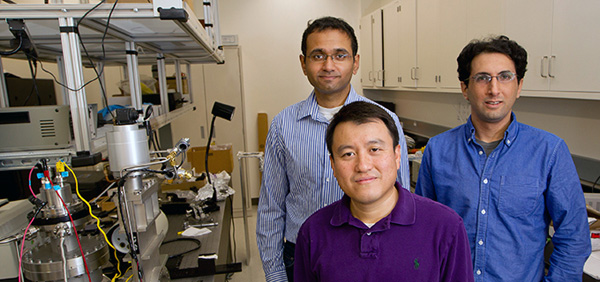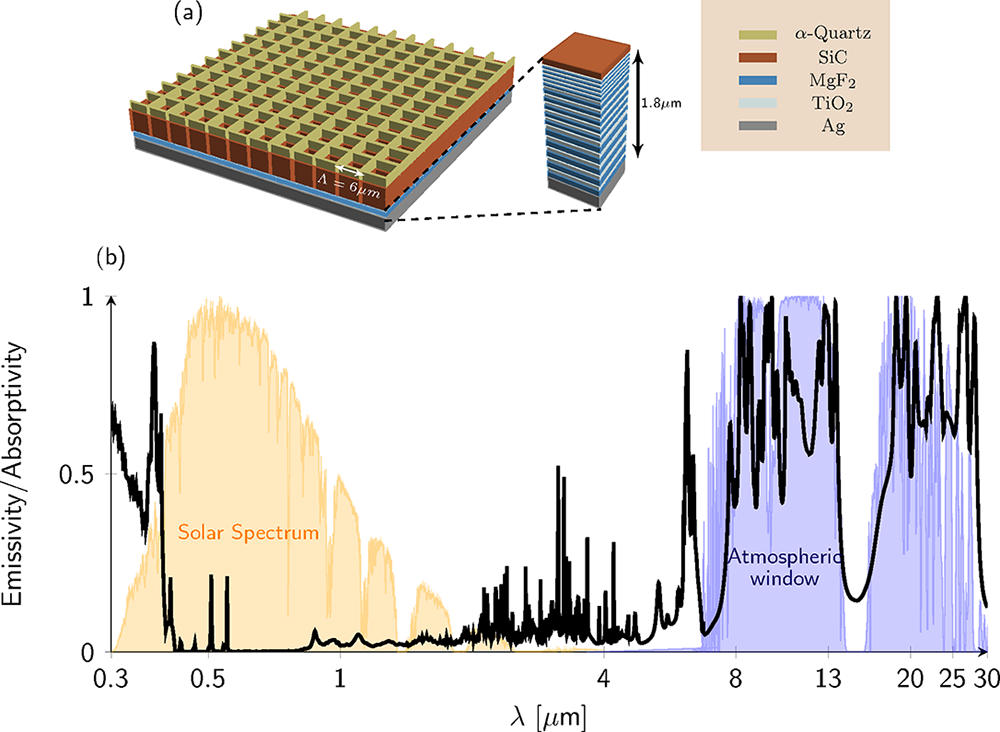Solar Cooling With Photonic Reflector Panel
Stanford researchers are developing rooftop panels that cool buildings by sending heat back into space, a technique that could be more efficient than running an air conditioner from solar panels.

Electrical engineering professor Shanhui Fan has designed a device which uses materials that allow him to manipulate how heat and light affect building temperature. He envisions flat rooftop panels which could greatly cut down on daytime cooling energy or be used to cool homes that don’t have access to grid power and air conditioning.
Fan co-authored a paper on the theoretical potential of a device that both reflects sunlight and emits heat using multiple layers of photonic materials. His team at Stanford was recently awarded a one-year, $400,000 grant from the ARPA-E research agency to build a demonstration to test its performance. The group is now building that prototype and hopes to eventually commercialize the technology.
The panel would have two components, both using layers of nanostructured photonic crystals. One is essentially a mirror with materials optimized to minimize the amount of solar radiation absorbed by a building’s roof. Above it is a separate layer made of silicon carbide and quartz that converts heat from a building and radiates it into space. Heat from a data center, for example, could be carried in hot water and piped below the panels. The panel would then radiate that heat to remove it from the building, Fan explains. Conceptually, the panel would act in reverse of a traditional solar hot water panel, which takes the sun’s energy and converts it into hot water.

To improve efficiency of the device, portions of panel’s materials are engineered to emit thermal radiation in a very specific wavelength that maximizes the transfer of energy into the atmosphere. The researchers estimate that such a device theoretically could achieve a net cooling of 100 watts per square meter. “If air conditioning is a big part of your energy needs, which is not all that unusual, it might be more efficient than taking a solar cell and driving an air conditioner,” he says.
The panels themselves would have no moving parts so operation would be simple. Fan envisions warehouses covered with these types of panels, which would be totally white to reflect sunlight. In theory, the reflected sunlight could be directed onto a solar photovoltaic panel to generate electricity as well.
The materials that would go into the device are not very expensive and could be made with lithography or other low-cost fabrication techniques, he says.
Keep Reading
Most Popular
Large language models can do jaw-dropping things. But nobody knows exactly why.
And that's a problem. Figuring it out is one of the biggest scientific puzzles of our time and a crucial step towards controlling more powerful future models.
The problem with plug-in hybrids? Their drivers.
Plug-in hybrids are often sold as a transition to EVs, but new data from Europe shows we’re still underestimating the emissions they produce.
Google DeepMind’s new generative model makes Super Mario–like games from scratch
Genie learns how to control games by watching hours and hours of video. It could help train next-gen robots too.
How scientists traced a mysterious covid case back to six toilets
When wastewater surveillance turns into a hunt for a single infected individual, the ethics get tricky.
Stay connected
Get the latest updates from
MIT Technology Review
Discover special offers, top stories, upcoming events, and more.